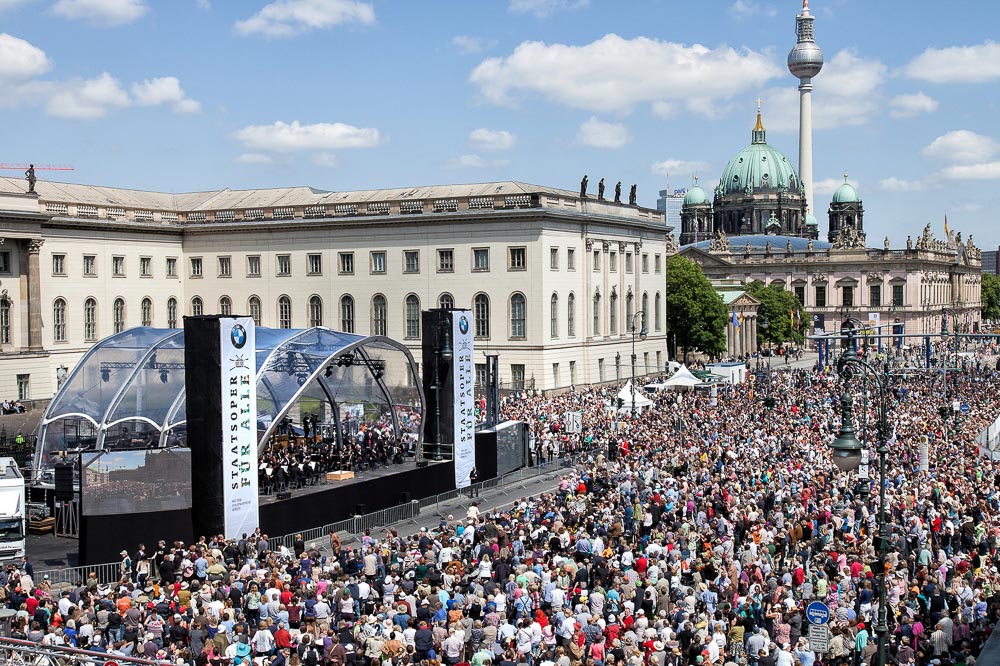Interview with Dr. Thomas Girst, Head of Cultural Engagement at the BMW Group
Dr. Thomas Girst bridges the fields of art and automobiles with ease and élan, effortlessly weaving culture with brand values. A widely published author, a respected art historian, and Head of Cultural Engagement at the BMW Group for over 14 years, Dr. Girst has led the vast art programme at BMW, MINI and Rolls-Royce Motor Cars, spanning over 100 projects worldwide. These have included iconic initiatives such as BMW Art Cars, BMW Art Journey, BMW Guggenheim Lab, the award winning ‚Opera for All‘ as well as the Rolls-Royce Art Programme and MINI/Goethe-Institut Curatorial Residencies Ludlow 38. Awarded ‚European Cultural Manager of the Year‘ in 2016, he has a unique perspective within the cultural realm that straddles both the artist and corporate viewpoints.
In an interview with Dr. Ellen-Andrea Seehusen of IAM – International Arts Management, Dr. Girst discussed the international cultural commitment at BMW, the history of its cultural engagement, major initiatives, and the guiding principles that help build a strong corporate art programme. While the detailed Q&A will be published in an upcoming book, here’s a preview of the valuable insight shared by Dr. Girst on the building blocks of corporate cultural engagement:
Respect creative freedom
The most important pillar of corporate cultural engagement is creative freedom. Rather than interfere with creative content, he believes that corporates should limit their influence to innovations in format instead. „We grant complete creative freedom to the artist,“ says Dr. Girst, „That’s the only way to be an authentic player on the company side within the realm of the arts.

„At BMW, he points out, creative freedom is a shared value as it is just as important for designers and engineers at the BMW group as it is for artists. This is amply evident in its award winning ‚Opera for all‘ concerts in Munich and Berlin, as well as the BMW LSO Open Air Classic, in which the company works with London Symphony Orchestra to organise free annual concerts at Trafalgar Square.
Build partnerships, not sponsorship
Sponsorships are transactions, says Dr. Girst, which are no more than monetary transfers from A to B. Partnerships, on the other hand, are interactions that engage artists in a lively multidisciplinary dialogue leading to collaborative development. „Both parties should be very transparent and very open about what their goals are,“ he emphasizes, „That way there will be no roadblocks or surprises down the mutual journey.“ A good art programme built on this mutual appreciation leads to longevity and sustainability. It is no wonder that BMW’s celebrated programmes like BMW Art Cars is still going strong after 40 plus years.
Be proactive rather than reactive
A cultural manager receives all kinds of opportunities for sponsorships and engagement. The key to building a strong programme is to ensure you do not limit your view to the proposals that come to your table. Instead, cultural engagement must be proactively designed to align with your brand. „You must create a narrative that comes from the core values of the company,“ advises Dr. Girst, „The nucleus of your engagement must be something that is authentic.“ This may require investment of time to arrive at the right expectations, build commitment and find the right person to guide you. But this is absolutely essential. He points to projects such as the BMW Guggenheim Lab where discussions took place for years before the programme finally took shape.

Widen the lens from shareholders to stakeholders
An art and culture programme in a corporate environment has to look beyond shareholders to address a wider stakeholder audience. „Supporting artists and institutions is not only being done for altruistic or philanthropic reasons,“ says Dr. Girst, „It fosters the visibility and reputation of the company and its brands.“ It must be designed with a long-term perspective rather than an eye on quarterly returns! Cultural engagement does ultimately lead to tangible returns on investment in the long run, but its benefits also go far beyond financial returns. It helps give back to the community in which the company operates, builds its public image and has a significant impact on its reputation as a responsible corporate citizen.
Built on these principles, the BMW cultural engagement spans art, music and architecture supported with a meta-level strategy for all three brands. And as he shapes the cultural roadmap of the Group, Dr. Thomas Girst looks back at the unbroken chain of its journey and takes great pride in the fact that he is standing on the shoulder of giants that have fashioned BMW’s rich cultural history for about half a century. „It is about the team at BMW“ Dr. Girst says, „not about the individual.“
Interview: Dr. Ellen-Andrea Seehusen
Text: Dr. Ellen-Andrea Seehusen
Photos: © BMW

